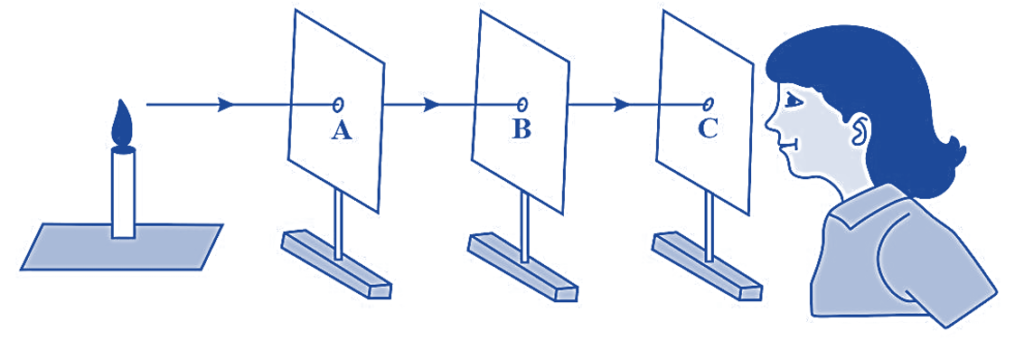Introduction
One type of energy that is essential to our existence is light. We are unable to envision a world without light. Light improves the beauty of everything around us and allows us to see. In both science and art, light is a crucial element. One of the crucial scientific instruments that enable scientists to examine things all across the world is light.
Some scientific theories claim that it is made up of particles, while others assert that it is made up of waves. What is the medium of propagation if the light is a wave? How does light move? We shall find answers to some of these questions in this article.
How does Light Travel?
Light can pass through a medium and in a vacuum. However, there won’t be any particles in a vacuum that light can’t reflect off of. Therefore, light is invisible in a vacuum. Light can reflect in the air when it strikes dust or other particles, making light visible in the atmosphere. Light may be thought of as having waves. Different light waves have varied wavelengths, and different light has different colours based on the wavelength. For instance, the shortest wavelength of light has a violet colour, whereas the highest wavelength of visible light has a red colour. Light, being a wave, may exhibit wave characteristics like diffraction and interference.
The answer to the question of how light typically moves is that it moves straightforwardly. However, the truth is that light’s smaller diffraction effect is the reason it appears to move in a straight line. The spreading out and the illumination of an area where a shadow is anticipated is known as diffraction, which is the bending of waves around an object. The wavelength of light is on the order of nanometers. We cannot see impediments of this size with our unaided eyes because the wavelength is too narrow. As a result, we see that light moves in a straight path. Rectilinear propagation of light is another name for the way that light moves in a straight line.
Want to get an “A” on your Science exams? Let our expert teachers be your guide toward improving your grades and reaching your highest potential. Study Science tuition for classes 6th, 7th, and 8th.
Experiment with the Straight Line Motion of Light
Normal light travels in a straight line because there isn’t enough diffraction to cause any noticeable effects. We demonstrate that light moves in a straight line using a basic experimental setup. In front of a candle on the tabletop, arrange three cardboard sheets back to back. Ensure that the candles and cardboard sheets are arranged in a straight line. On each cardboard sheet, poke a pinhole after lighting the candle. To allow for the visibility of the candle’s flame, the holes must be made at equal heights. Now, observe which line light travels in by looking through the holes. Along the slender line of holes, the thin flame will be visible. Now move one of the cardboard sheets to either side and observe the flame. Can you see the flame? The flame won’t be seen when you move the cardboard sheet. Reposition the cardboard sheet in its original location. The flame may now be seen. The experiment diagram is shown below. From this experiment, we may infer that light moves in a straight line.

Examples of Straight-Line Motion of Light
- When a lamp, torch, or another source of light emits light, it travels in a straight line.
- When sunlight enters a dusty environment through tiny holes, a straight-line trail of light is apparent.
- The object will become invisible when an opaque object is placed in front of it. The reason for this is that an opaque object prevents light from bending through its corners.
Summary
The light rays move in a straight line. The minimized diffraction effects of light facilitate the propagation of the light in a straight path. Examples, where the light rays travel in a straight line, are the light ray that comes from a train, a torch, and/or a lamp.
Frequently Asked Questions
1. What is Rectilinear Propagation of Light?
Ans: The motion of the light rays in a straight line is termed the rectilinear propagation of the light.
2. Explain why Light Travels in a Straight Line?
Ans: Diffraction is a wave characteristic of light. Only when the wavelength of the light wave is of the order of the dimension of the size of the particle it collides with, and the phenomena of diffraction take place. The wavelengths of light are on the order of nanometers. Typically, a nanometer-sized item is invisible to the human eye. Light’s diffraction impact is therefore too modest to be taken into account and travels in a straight-line path.
3. Why is Light Invisible in a Vacuum?
Ans: Light can travel through the vacuum, however, since there are no particles available in the vacuum, light cannot reflect in a vacuum and therefore light is invisible in a vacuum.

